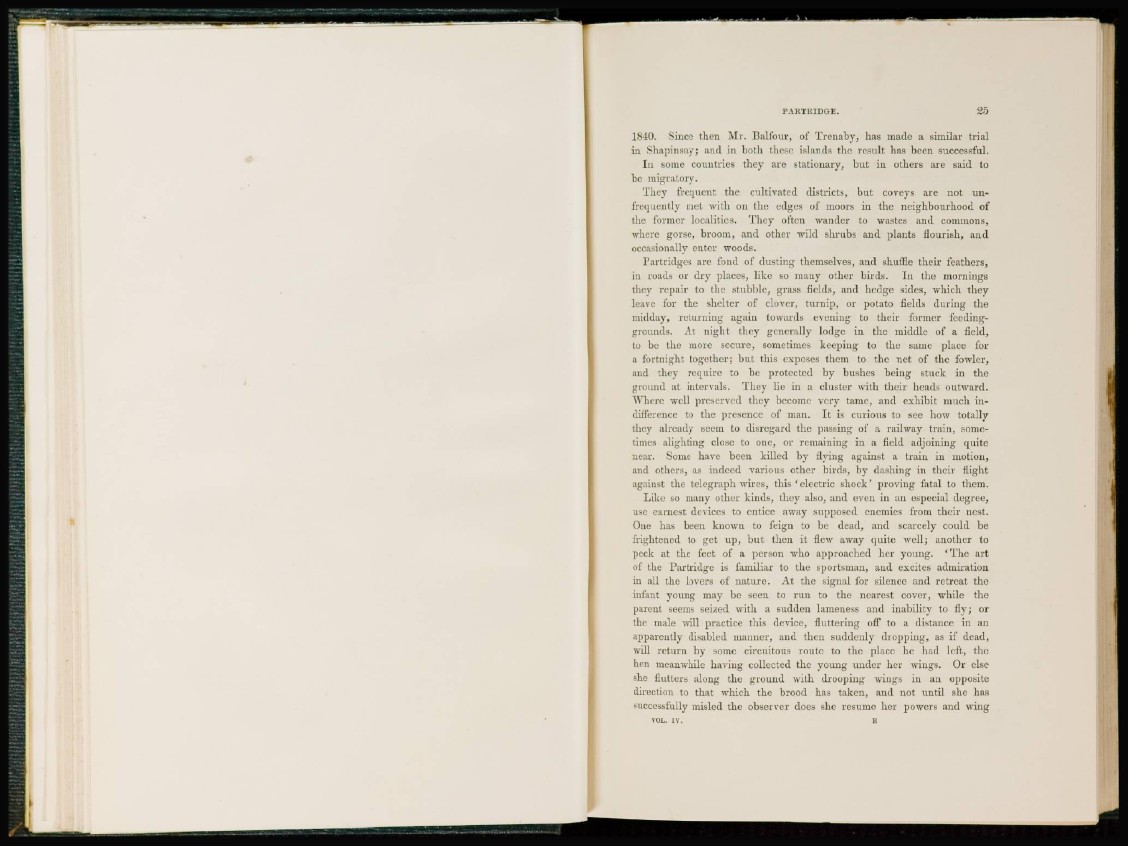
1840. Since then Mr. Balfour, of Trenaby, has made a similar trial
in Shapinsay; and in both these islands the result has been successful.
I n some countries they are stationary, but in others are said to
be migratory.
They frequent the cultivated districts, but coveys are not unfrequently
met with on the edges of moors in the neighbourhood of
the former localities. They often wander to wastes and commons,
where gorse, broom, and other wild shrubs and plants nourish, and
occasionally enter woods.
Partridges are fond of dusting themselves, and shuffle their feathers,
in roads or dry places, like so many other birds. In the mornings
they repair to the stubble, grass fields, and hedge sides, which they
leave for the shelter of clover, turnip, or potato fields during the
midday, returning again towards evening to their former fecdinggrouuds.
At night they generally lodge in the middle of a field,
to be the more secure, sometimes keeping to the same place for
a fortnight together; but this exposes them to the net of the fowler,
and they require to be protected by bushes being stuck in the
ground at intervals. They lie in a cluster with their heads outward.
Where well preserved they become very tame, and exhibit much indifference
to the presence of man. It is curious to see how totally
they already seem to disregard the passing of a railway train, sometimes
alighting close to one, or remaining in a field adjoining quite
near. Some have been killed by flying against a train in motion,
and others, as indeed various other birds, by dashing in their flight
against the telegraph wires, this ' e l e c t r i c shock' proving fatal to them.
Like so many other kinds, they also, and even in an especial degree,
use earnest devices to entice away supposed enemies from their nest.
One has been known to feign to be dead, and scarcely could be
frightened to get up, but then it flew away quite well; another to
peck at the feet of a person who approached her young. 'The art
of the Partridge is familiar to the sportsman, and excites admiration
in all the lovers of n a t u r e . At the signal for silence and retreat the
infant young may be seen to run to the nearest cover, while the
parent seems seized with a sudden lameness and inability to fly; or
the male will practice this device, fluttering off to a distance in an
apparently disabled manner, and then suddenly dropping, as if dead,
will return by some circuitous route to the place he had left, the
hen meanwhile having collected the young under her wings. Or else
she flutters along the ground with drooping wings in an opposite
direction to that which the brood has taken, and not until she has
successfully misled the observer does she resume her powers and wing
VOL. IV. E